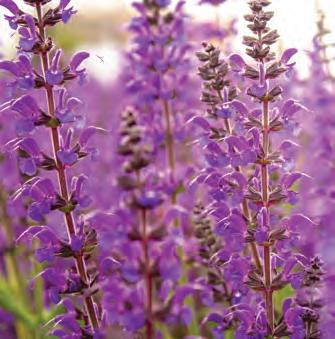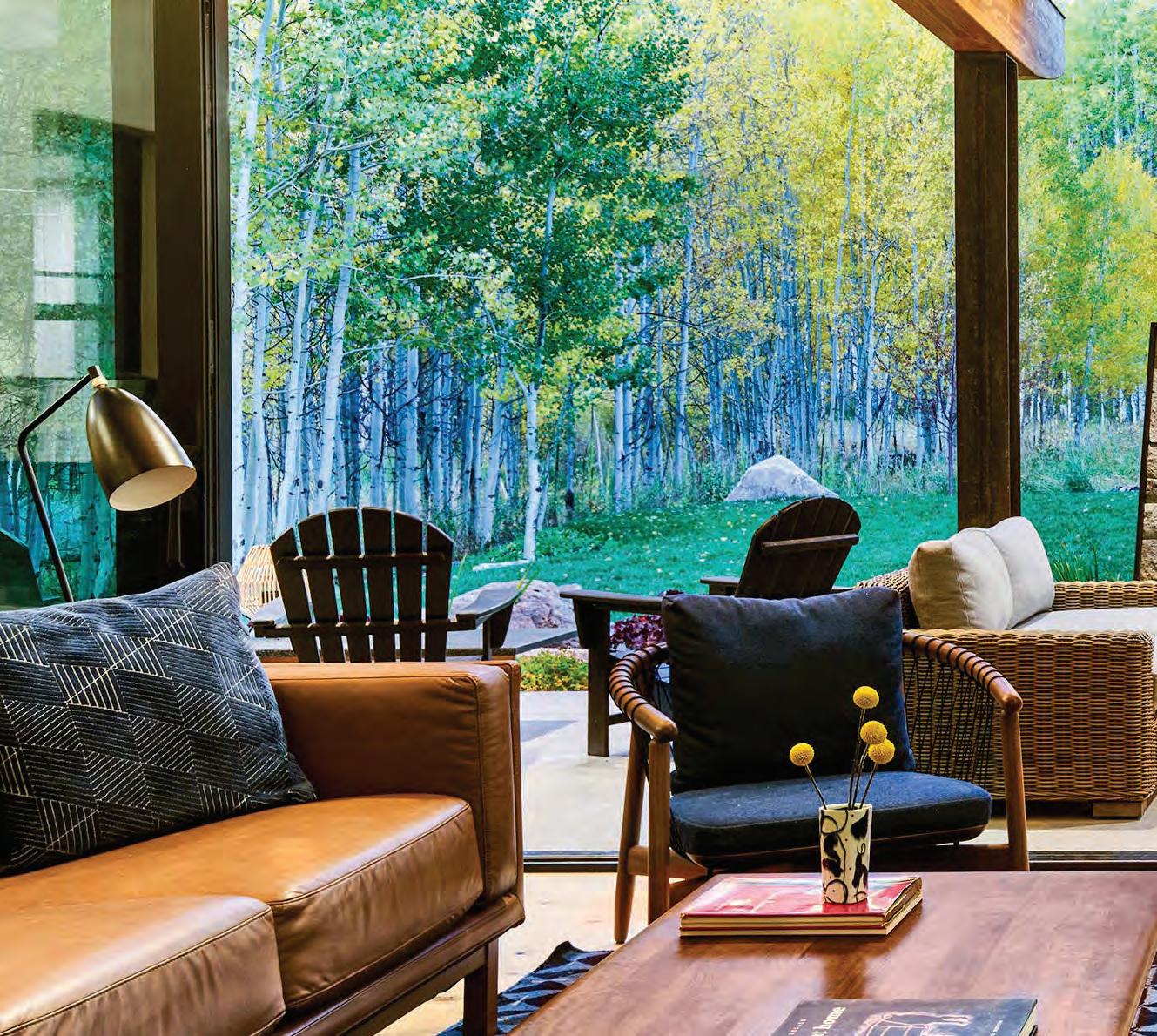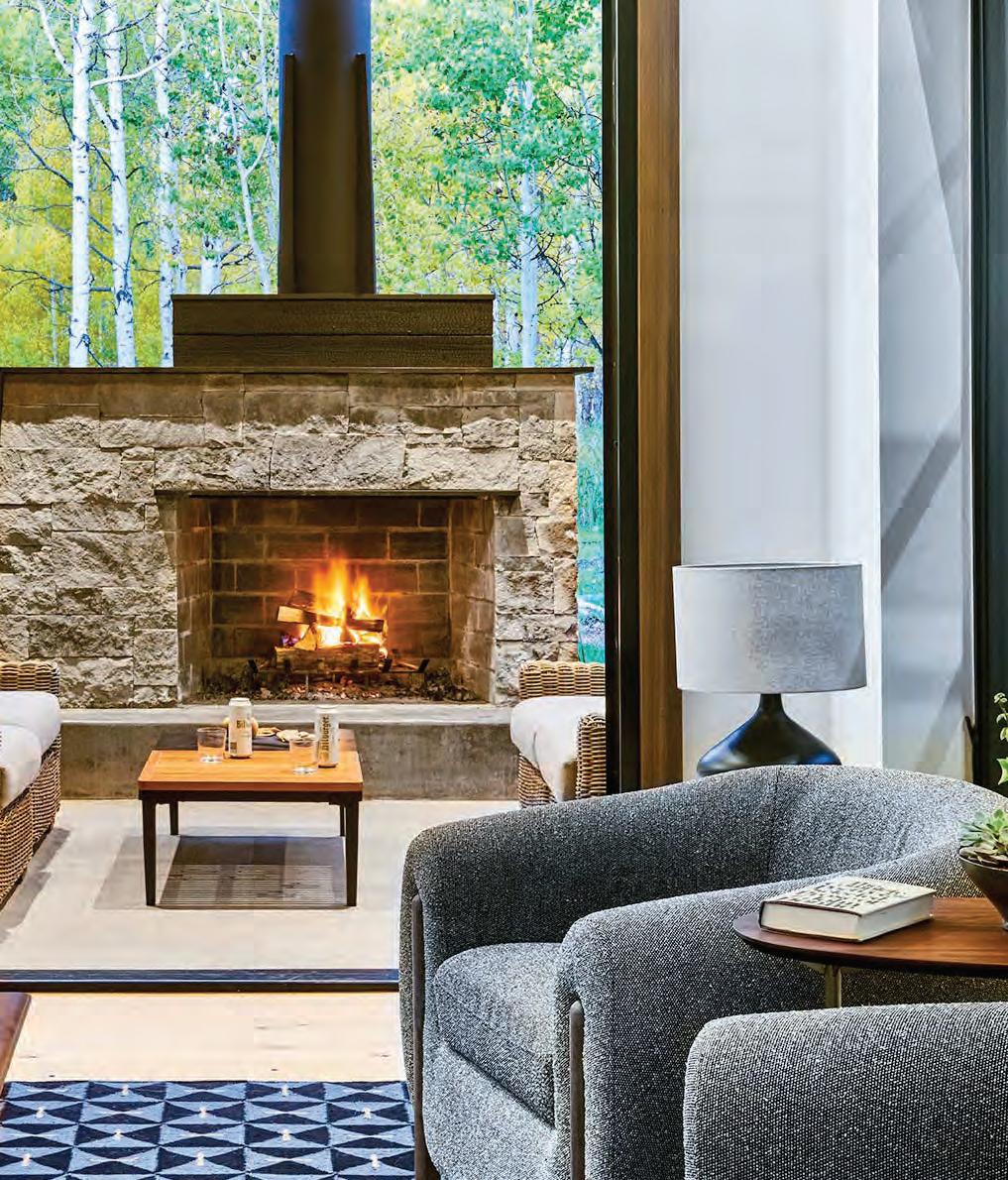
5 minute read
WE CAUGHT UP WITH FRIEDLAND DURING HER BUSY SPRING PLANTING SEASON TO LEARN A FEW TRICKS OF THE TRADE.
TAKE INVENTORY.
“The first thing to do if you want to plan a home
GET YOUR HANDS DIRTY.
When it comes to gardening in Colorado, the first challenge is the soil. “We tend to have very clay-heavy soils here, which has small pore space and is very compacted,” Friedland says. “This makes it difficult for air and water to travel through, and both those things are important for roots to be able to grow. The best way to amend this is to add organic matter or compost to your soil.” Making your own soil from compost, like they do at the YRBP, is the most sustainable option; it just takes time. You can also buy compost at your local landscaping store. “If you can’t make your own compost, just be sure to buy it from a local garden center as opposed to big box store. You’re going to get better quality compost and support your local community.
Because of our close proximity to the sun at altitude, light takes on a whole new level of intensity, which can be good or bad depending on the type of plant. “It really depends on which side of the house you’re gardening on. If it’s south facing, choose sun-loving native plants that are easy to maintain and don’t require a lot of water like Blanketflower or Firecracker Penstemon. On the north-facing side of a home is an opportunity for a shade garden where plants like Irish Spring Lungwort and Coral Bells varieties will do well, even though they aren’t native to the area. A few plants that do well in partial sun are Native Harebell and












CONSERVE WATER.
After 22 years of drought, Colorado’s water supply is extremely compromised, so it’s important to consider ways to conserve water. “Low water plants like Colorado Desert Blue Star, Scott’s Sugarbowls, and Mojave Sage are a great choice for a garden that is more sustainable,” Friedland says. “How and when you water your garden is also important. “I would recommend watering infrequently but for longer periods of time, so the water has a chance to soak in really deep, which is going to encourage your plants to grow long roots to get to those reserves,” Friedland says. “If you live on a slope, you may want to water for about 10 minutes, and then wait 10 minutes to give it a chance to soak in really well, then repeat. If the water is shallow, your roots will be shallow.” Time of day is also key: avoid watering in the hot sun when the water can evaporate. “The ideal time to water is in the evening so the water has all night to soak in.” Finally, choose those water-wise plants that can thrive without needing a lot of water. “Plants that are native to Colorado are always going to be the best choice for a low maintenance garden.” The grass might not always be greener in Colorado, but there is always plenty of room to grow. // yampariverbotanicpark.org



Progressive Architec Ture



Get Out
Outdoor Living Design With A New Level Of Sophistication
Outdoor living has always been the cornerstone of mountain home design, even in a cold winter climate like Steamboat where warm weather is only to be enjoyed for part of the year. Still, since the pandemic, mountain homeowners have been creating hotelquality, luxury outdoor living spaces that can be used throughout the year. These sophisticated spaces go beyond a well-furnished patio to something that requires integrated architecture and design to create a seamlessness between indoors and out that epitomizes what mountain living is all about.

“ People want to blur the line between indoor and outdoor living,” says Adam Wright, Founding Principal, CRAFT Architecture Studio. “Because of our cold climate, there’s a focus on creating warmth and ambiance with an easy transition from inside to outside. Development of luxurious space is embellished by a connection to the outdoors that is easy and seamless.”
T his can be achieved in a number of ways, from large format sliding doors to passthrough windows that provide easy access to the kitchen for food preparation, entertaining, and clean up. “You might have a bar top or countertop on the other side of your passthrough window that’s close to your kitchen sink,” Wright says. This is going to be more functional than outdoor kitchens you might find in a warmer climate that would be very difficult to maintain during the subzero temperatures of a Steamboat winter.
B ecause of our colder temperatures, even during chilly summer nights, a key component is to create enough heat outdoors so that the space can be enjoyed throughout the year. While fireplaces and firepits are nothing new, architects are taking a more thorough approach to integrating outdoor living spaces into the home with roof cover that can protect the space from the elements. “A key feature of outdoor living space is some sort of roof cover or canopy that offers protection from snow in winter and the harsh sun in the summer,” Wright says. “It helps bolster and support the use of that outdoor space and to extend the outdoor living season as you’re protected all year round.”
A n overhead roof or canopy structure that blends into the home’s overall architecture also allows for finishes and the integration of electrical for heating and lighting. “We’ve been doing flat or shed style roofs with exposed beam work and nice ceiling materials like tongue and groove wood board that creates warmth and becomes a real extension and feature of the house,” Wright says. Lighting can be integrated into the beam work or added onto the side of the building with sconces. Another trend is festival lighting, the string lighting you see on Yampa Street that, as the name implies, creates a festive, party-like atmosphere.
I n addition to protection from a roof, heat is also an essential component for the ideal outdoor living space. “Another element we’re seeing more of is exterior heaters that can be attached to a canopy roof. These are ceiling mounted and angled down to heat the space more effectively than a fireplace or firepit, which is more for ambiance than warmth,” Wright says. “These heaters can create enough warmth to allow for use of the space throughout the year and elevate the space to something more luxurious like you might see in a high-end hotel.”


It’s important to differentiate between a deck and a patio, the latter of which is typically on the ground level and finished in stained or stamped concrete for a more polished look that is going to be functional and low maintenance throughout the year and create a solid surface base. A deck is going to be constructed of framed wood or composite decking and located on an upper level.
A ground-level patio allows for more seamless landscaping and the integration of water features. While amenities like hot tubs and outdoor showers are typically located for privacy, other water features can be used to have an aesthetic, even auditory impact. “On a recent project, we connected a rain chain to one of the beams in the structure of the roof as an artistic or decorative way to channel water off a downspout from the roof. It directs the water through a chain with spill cups to control splashing. The feature is an artistic touch to outdoor space, and in transitional season into winter freezes and becomes ice sculpture,” Wright says.
Perhaps the most important component, particularly from an architectural standpoint, is maximizing the view. “When we consider the architectural elements, we’re thinking more holistically about the views and the elements that help frame that outdoor space, so we’re going to think a lot about orientation,” Wright says. Instead of a room with a view, you have a view from which to create a room—just one without walls. // craftarchitecturestudio.com










